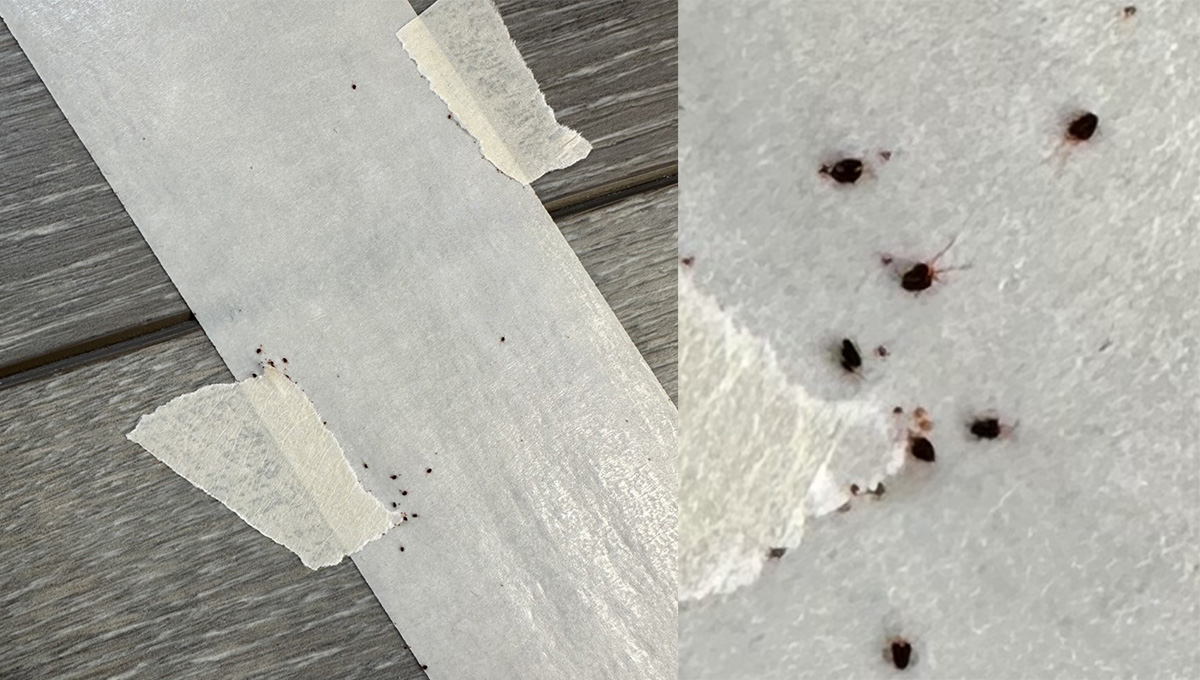
By Kait Chapman, Extension Educator in Lancaster County
Home-invading insects are a common issue for many homeowners, from fall-invading stink bugs to foraging ants. A key strategy to keep these insects at bay is to prevent them through exclusion, i.e., make your home inaccessible to these many-legged invaders. Strategies for insect-proofing your home range from caulking and sealing cracks, crevices and other potential entry points, fixing broken screens on windows to installing door sweeps. Inspecting for these entry points requires one to “think like a bug,” but a general rule to follow is: If light can get through an opening, so can an insect.
While these strategies are essential in preventing many home-invading bugs, others are trickier to keep out. Reports of clover mites invading homes have been an increasing trend at Nebraska Extension in recent years. Clover mites are small, eight-legged arachnids, with adults only reaching a minuscule one-thirty-second of an inch in size. While the mites are most often recognizable due to their reddish (or occasional greenish) color, true identification requires a microscope to see their elongated front legs.
Clover mites are common in landscapes around the home. They utilize grasses, honeysuckle, ivy, elm, apple, gooseberry, clover and other weeds as host plants to feed on. In the winter, clover mites spend time in sheltered locations as eggs, becoming active again as temperatures reach over 45°F in the spring. As populations rise and temperatures shift, these mites incidentally invade structures such as homes, in both the spring and fall. Homeowners often find themselves with hundreds of mites coming through minuscule gaps, typically around windows or doors. And while the presence of so many “creepy-crawlies” may be concerning, there’s some relatively good news: 1) they don’t bite or cause damage to the home, and 2) they don’t reproduce indoors.
And while clover mites are harmless to people and homes, there is a significant drawback: they may be difficult to manage. If you do find yourself with clover mites in the home, you can use a vacuum for simple removal or lay insect-trapping sticky boards around indoor entry points. Because they don’t truly infest a home, insecticides used indoors are unnecessary and not recommended. Though not highly effective, insecticides containing a pyrethroid-active ingredient and labeled for clover mites can be applied around the home’s perimeter and repeated as needed. A pesticide-free strategy to preventing the mites is to reduce vegetation, leaving a greater than 18” grass-free band around the home.
A good thing to keep in mind is that these strategies work best together. If your home has a history of clover mites, consider using multiple methods to help manage and prevent them.